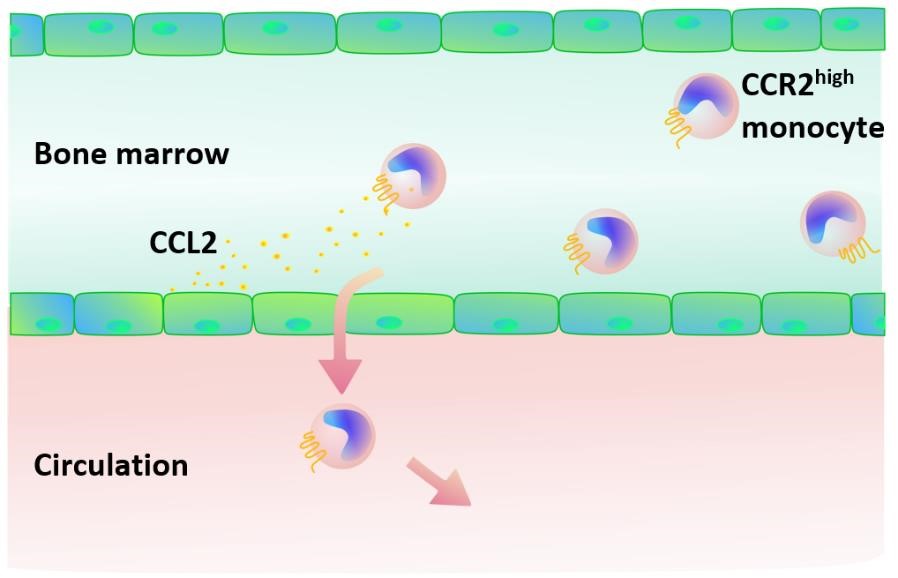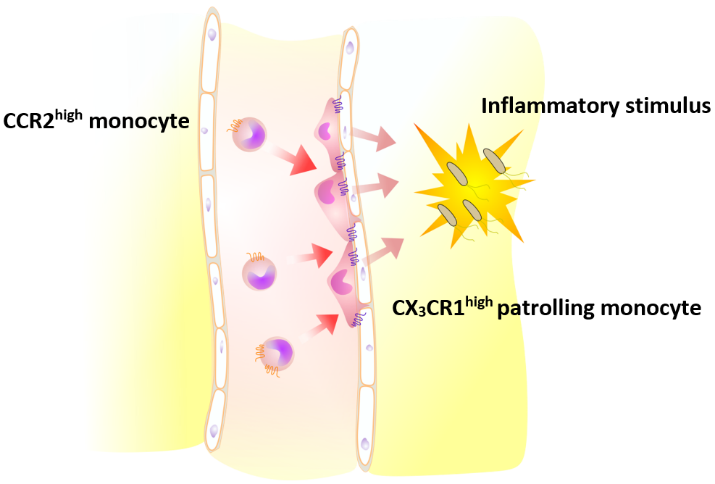BiteSized Immunology: Receptors & Molecules

Chemokine receptors on monocytes
Chemokine receptors are G-protein coupled receptors (GPCRs) which enable a cell to respond to its chemokine ligand(s). Binding to a chemokine induces a conformational change in the receptor which leads to intracellular signalling, resulting in chemotactic movement, increased avidity and affinity of integrins, and, in some cases, cell activation. The interaction between the chemokine receptors on a cell and chemokine is fundamental to the recruitment of the cell to the appropriate site for action.
Monocytes, derived from myeloid progenitors in the bone marrow, circulate in the blood. They are important for an inflammatory response, differentiating into macrophages or dendritic cells (DC) under certain circumstances. Two major subpopulations of monocytes have been identified in mice on the basis of their expression of Ly6C and the chemokine receptors, CCR2 and CX3CR1. The largest population under steady state conditions is Ly6C+, CCR2high, CX3CR1low, and the second Ly6C-, CCR2low, CX3CR1high. These correspond phenotypically to populations found in human blood, CD14++, CD16-, CCR2high, CX3CR1low (classical), and CD14+, CD16++, CX3CR1high, CCR2low (non-classical) respectively. However, in humans a third subset can be identified, CD14++, CD16+, CX3CR1high, CCR2low (intermediate).
In mice, the CCR2high subset is often referred to as inflammatory and is usually the predominant subset recruited at an inflammatory site. CCR2 is important for this recruitment. However, CCR2high monocytes, depending on environmental signals, may differentiate in tissue into a variety of subtypes of macrophages or DC which may be pro- or anti-inflammatory. CCR2 is also important for the release of CCR2+ monocytes from the bone marrow in response to CCL2 produced by bone marrow stromal cells (Figure 1).

CX3CR1high monocytes in both mouse and human have been shown to adhere and crawl along the luminal side of the vascular endothelium in a CX3CR1 and LFA-1 dependent manner, independent of blood flow direction. CX3CR1 also provides a survival signal for these monocytes. They are known as patrolling monocytes and long-range crawling on the vasculature allows them to act as ‘housekeepers’ of the vasculature, clearing debris, scavenging microparticles and scanning for any inflammatory stimulus. They can recruit neutrophils and may interact with other cells of the immune system. With certain stimuli they are able to extravasate into tissue rapidly and can be inflammatory (Figure 2).

Monocyte recruitment may also be influenced by their expression of other chemokine receptors such as CCR1 and CCR5 and the relative importance of the chemokine receptors is likely to depend upon the particular microenvironment prevailing at the inflammatory site.
© The copyright for this work resides with the BSI.
